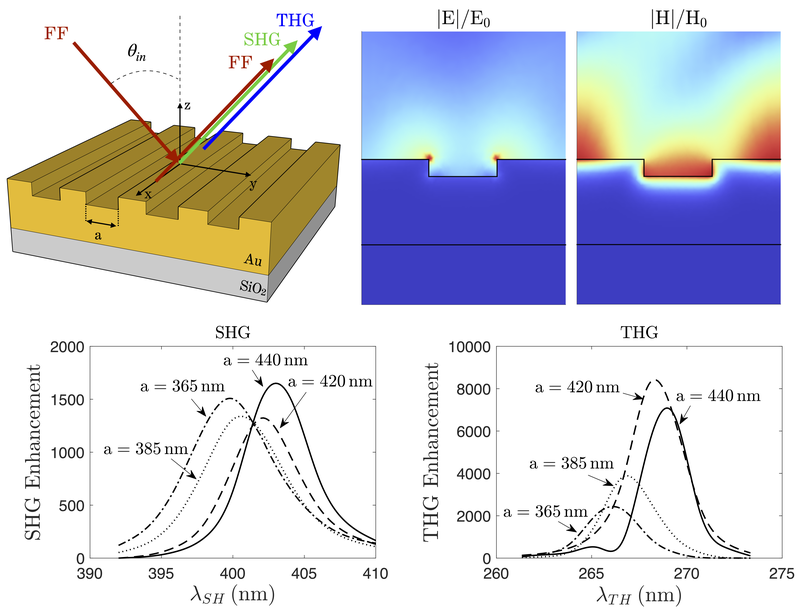Doctoral thesis on non-linear optical effects in nanomaterials for a better understanding of light-matter interaction at the nanometric scale
Jun 20, 2023
Laura Rodríguez defended her thesis co-supervised by Crina Cojocaru and Jose Trull on June 19 at the North Campus. Entitled "Nonlinear optics at nanoscale: frequency conversion at interfaces", the thesis presents an experimental and theoretical analysis on the generation of second and third harmonics in nanolayers and nanostructures made of strategic materials for the world of nanophotonics
The use of semiconductors, metals and ordinary dielectrics in the nanodevices fabrication process is at the front edge of nowadays technology. In the last decade an impressive technological progress has been made towards the miniaturization process, giving birth to the field of nanophotonics. Currently, nanostructures are routinely fabricated and integrated in different photonic devices for a variety of purposes and applications. At the nanoscale, lightmatter interaction can display new phenomena, usually neglected for the same materials with thickness of micron or millimeter size. This scenario makes conventional approximations to the dynamics of light-matter interactions to break down and new strategies must be sought in order to study, understand, and ultimately harness the performance of subwavelength nonlinear optical materials. This is the case of nonlinear interactions and in particular, of nonlinear frequency conversion, a fundamental physical process that lies on the basis of many modern disciplines, from bioimaging in nanomedicine to material characterization in material science and nanotechnology. Nonlinear photonics also holds great promise in laser physics with applications in information technology for optical signal processing and in the development of novel coherent light sources. Thus, a deep understanding of the specific aspects of light-matter interaction at the nanoscale is crucial if one is to properly engineer nanodevices.
In this thesis we report comparative experimental and theoretical studies of nonlinear frequency conversion in different strategic materials for photonics having nanoscale dimensions. At the nanoscale the working condition are different from usual nonlinear optics configuration, as phase matching condition and even absorption no longer play a primary or significant role, and new linear and nonlinear sources become relevant.
We start our study with homogeneous nano-layers, to later project our results to the design and study of nanostructures, able to localize the electromagnetic field and consequently enhance light-matter interactions. We have developed novel experimental set-ups capable of accurately measure very low second and third harmonic generation efficiencies arising from semiconductors, conductive oxides and metal nanolayers and nanostructures. We perform an exhaustive study of harmonic generation by analyzing the nonlinear signals as a function of incident angle, wavelength and polarization, important parameters that determine and distinguish the origin of the nonlinear process.
The experimental results are contrasted with theoretical predictions of numerical simulations based on a unique microscopic hydrodynamic model that considers different contributions to the nonlinear polarization, usually neglected by most of the nonlinear models. Experimental – numerical comparison allows us to identify and distinguish the different mechanisms that trigger the harmonic generated signals in the visible and UV wavelength range, while extracting basic physical properties of the material. With this knowledge we can make a step forward and predict conversion efficiencies in more complex nano-structures which can be specifically designed to enhance harmonic generation. The capability to efficiently generate harmonics at the nanoscale have an enormous impact in the fields of nanomedicine and nanotechnology, since it would allow one to realize much more compact devices and to interrogate matter in extremely confined volumes.

Share: